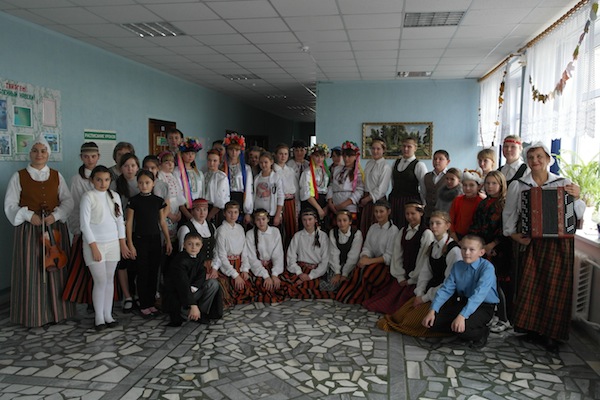After a third section of the roof collapsed the evening of Nov. 23, State Fire and Rescue Service officials have suspended the search for victims that may still be buried in the rubble of a Rīga supermarket. The death toll stands at 54.
The roof of the Maxima XX supermarket at 20 Priedaines St. in the Zolitūde neighborhood of western Rīga collapsed during the late afternoon of Nov. 21, trapping dozens of shoppers and store employees. The State Fire and Rescue Service reported that the first call for assistance was received at 17:46 hours. A secondary collapse killed three firefighters as rescue workers were clearing rubble in an effort to find victims.
A spokesperson for the service announced through Twitter that the search for additional victims will be on hold until Sunday morning, Nov. 24, to allow for consultations with builders and other experts about the safety of building.
Latvian President Andris Bērziņš, speaking Nov. 23 on Latvian State Television, called the collapse “mass murder” and said that ultimately the country’s political system is to blame.
About two dozen victims are being treated in hospitals. Ten people who may have been in the store remain unaccounted for, according to a State Police announcement on Twitter.
Besides the three who died in the second collapse, 12 firefighters have been injured, according the Latvian Ministry of the Interior. No one was injured in the third collapse, according to the State Fire and Rescue Service.
The Cabinet of Ministers announced Nov. 22 that three days of mourning have been set from Nov. 23-25. On Monday, Nov. 25, a three-minute long moment of silence has been scheduled at 10 a.m. Latvian time.
Letters of sympathy have been received by the Latvian government from a number of countries, while several Latvian embasses and consulates have announced that they will make available books of condolences for visitors to sign.
Initial reports said two persons had died and several more were injured, but the death toll increased as more rubble was cleared. Media reports said mobile telephones could be heard ringing in the rubble as people searched for the whereabouts of loved ones.
Investigators have begun looking into the collapse. Some eyewitnesses initially reported hearing what sounded like an explosion, according to media reports, but that could have been the sound of glass or building materials shattering. One possible reason for the collapse may be tied to construction of a rooftop green area that was underway at the supermarket.
The State Fire and Rescue Service identified the dead firefighters as First Lt. Edgars Reinfelds, Capt. Vilnis Šteinītis and Cpl. Sergejs Ižiks.
The Maxima chain of markets is owned by Lithuania-based Maxima Grupė. It operates in all three Baltic republics as well as in Bulgaria.
The company’s Latvian website, maxima.lv, on Nov. 22 displayed a message of sympathy, with white letters on a black background. “A tragedy has occurred,” the message read, translated from Latvian. “This is a misfortune for all of us.” The company promised to cover medical costs for the injured and funeral costs for the dead.
The Maxima project on Priedaines Street, which includes the retail center and a nearby 12-story residential building still under construction, in 2011 was chosen among winners of the “Show of the Year” by the Latvian Association of Architects (Latvijas Arhitektu savienība). The project was designed by SIA Kubs and built by SIA Re&Re. The latter is among Latvia’s leading construction companies and includes among its projects the new National Library of Latvia.
The Latvian Ministry of the Interior announced that donations to help its employees and their families may be made to a Swedbank account held by the Trade Union of Latvian Interior Employees (Latvijas Iekšlietu darbinieku arodbiedrība). The ministry oversees the State Fire and Rescue Service. Besides the killed and injured firefighters, the ministry confirmed that an employee of the ministry’s Information Center is among the dead. Information about how to donate is found on the trade union’s website, lidarodbiedriba.lv.
Meanwhile, a donation fund for victims and their families has been set up on the Ziedot.lv portal. By the early evening of Nov. 23, more than LVL 215,000 had been donated. (For the English version of the Ziedot.lv page, click here.)





